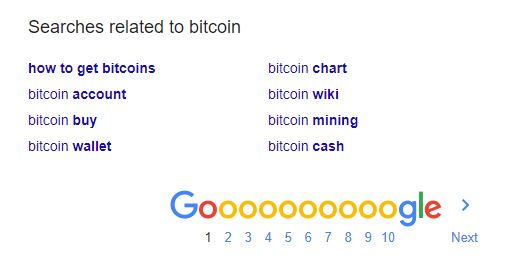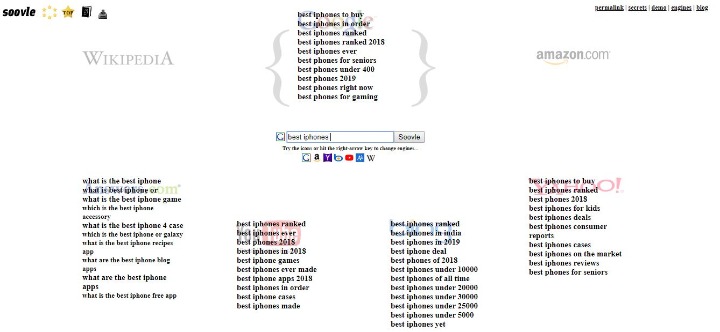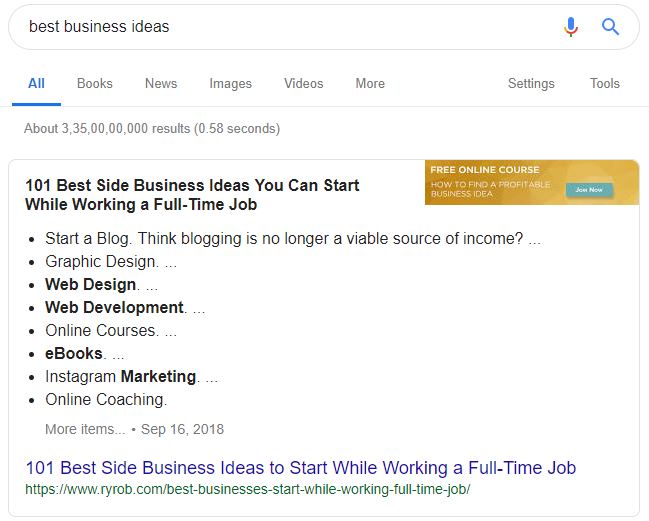
SEO article writing is a technique that every content writer should know to SEO optimize the article and blogs. Professional SEO article writers know how to do a perfect keyword research and keyword placement. Creating SEO friendly content or article needs a powerful content strategy. Placing keywords in meta titles and meta description is not enough. I have seen many informative and engaging content not getting enough traffic, just because the article is not optimized for search engines. SEO optimization of articles will help you to drive a lot of traffic on your blog or website.
So how do you upgrade yourself from a content writer to SEO copywriter? Follow the step-by-step SEO content strategy I have explained below and you will know. In this article, we will see how to write SEO optimized articles which can boost your ranking, not only on Google but also on the other search engines.
Here are 10 Tips on How to Write SEO Article
1. Do the perfect Keyword Research and pick up your focus keyword
2. Use LSI (Latent Semantic Index) Keyword strategy
3. Use the most relevant keywords in the first 100 words
4. Use keywords in image alt text and image file name
5. Use related keyphrases in H1, H2, H3 Headings and sub-headings
6. Start meta title and meta description with the focus keyword
7. Write the content longer than your competitors and keep the Keyword density between 1-2%.
8. Make sure your content is easy to read and understandable
9. Internal links give your ranking a boost
10. Make URL Structure SEO Friendly
1. Keyword Research – Types of Keywords
There are three types of keywords: Short tail keyword, Longtail keyword, and Medium tail keyword.
Short Tail Keywords
Short tail keywords are keywords with only one or two words, they are very specific. For example Mobiles, Technology, Bitcoin, SEO, etc. are short tail keywords. These keywords have very high monthly search volume but also it has very high competition. For example, search volume for Mobiles is 60500 but the SEO difficulty is 80.
Medium Tail Keywords
Medium tail keywords are keywords with two to three words in it. For example, Best mobile phones, what is bitcoin, best SEO tools are medium tail keywords. Medium tail keywords have medium search volume and medium difficulty. For example, search volume for Best mobile phones is 22200 and SEO difficulty is 49.
Long-Tail Keywords
Long-tail keywords are keywords with more than three to four words. For example, Best mobile phones under Rs. 10000, What is bitcoin price in India, Best Keyword research tools. These keywords have low (sometimes very low) search volume but also very less competition. For example, Best Keyword research tools have a search volume of 480 and the SEO difficulty is 9!
So which type of keywords you should target on? It depends on the domain rating (DR) of your website. If you are starting a new fresh blog or even if you have the DR in the range of 0-20, then you should go for Long tail keywords. If you are writing relevant SEOed content with the DR of 20-40 then you can definitely for the medium tail and short tail keywords.
The best target keywords are a mixture of short tail and long-tail keywords.
For example, if my focus keyword is “Best SEO Tools for Keyword Research, Link Building, Article Writing” I am targetting multiple keywords like SEO Tools, Best SEO Tools, Best SEO tools of keyword research, link building, Article writing. So with this strategy, you will be able to target multiple keywords and cover more traffic.
But where will you find these keywords? Are there any tools or techniques for it? Yes, there are! Let us see how to do perfect keyword research.
2. How to do a Perfect Keyword Research
There are three types of Keyword Research:
1. Topic-based keyword research for optimizing the content
2. Competitor keyword research for outranking the competitor
3. Niche keyword research for generating new content ideas
Here we will only talk about topic-based keyword research.
So the first question that arises in mind is should you do the keyword research before writing the content or after writing the content?
I prefer doing it after writing the content. Because when I am done with my article, I have an idea about what points I have written, what keywords can I use in my content? And this information helps me to do more accurate keyword research. It also saves some time which you will waste on irrelevant keywords if you research before writing the content.
The step-by-step process for how to do the keyword research
1. Go through your own article
The first step I do is I go through my own article. Because while writing, you use many important keywords naturally. Gather these keywords in one sheet or notepad.
2. Google it.
What can be the best place to find highly relevant keywords to your keyword? Google’s search page! Google your topic. And when you scroll down you can see the related keywords. These are the keywords which are highly relevant to your focus keywords. Also, go through the competitor’s meta title and description. Check what keywords are they using in their meta tags. Copy them on your keyword sheet.

3. Soovle – Goldmine for Long Tail Keywords
Soovle is an amazing tool for generating long tail keyword ideas. It gives you auto suggest data of Google, Bing, Yahoo, YouTube, Wikipedia, and Ask.com. It is more than enough if you just focus on Google.
Here’s the trick: Type in your focus keyword, and keep going in alphabetical order from a to z. For e.g. Your focus keyword is “optical mouse”, type “optical mouse a”, “optical mouse b”, “optical mouse c” and so on till “optical mouse z”.
Yeah, it is time-consuming but it gives you a lot of keyword ideas. You will also generate new content ideas from these keywords.

4. Questions
It is always a good idea to include some questions in your article at the bottom or in the content, or in the meta tag itself. For finding the question the best tools are Quora, niche-specific forums, Amazon, Flipkart for products, comments on the competitor’s blog. You can find here what users are looking for and if by any chance no one has written any content on that question, you can go ahead and write one.
5. Keyword metrics
So now that you have gathered all the keywords in your sheet, its time you sort the keywords according to some metrics. The most important metrics when it comes to keywords are Monthly search volume, SEO difficulty, and User intention.
Search Volume: Monthly search volume of keyword gives you the information of how trending that keyword is and how much traffic you can expect from that keyword.
For example keyword, “Blackberry phone” has a search volume of 27,100. And if you are ranking first for that keyword we will get the ~30% of traffic share of 27,100 which is 8.1K visitors per month.
Similarly, if you are ranking in the second position, you will get 16% of traffic and so on. You can see the traffic share according to the position here.
Keyword Difficulty: The second important metric of a keyword is SEO Difficulty. SEO difficulty aka Keyword difficulty is the metric which tells you how difficult it will be to rank for the specific keyword.
For example, keyword difficulty for “Blackberry phone” is 56, which means it will be really difficult to rank for this keyword. But the keyword “blackberry new phone 2018” has the difficulty of 29, which is quite easier to rank for than “Blackberry phone”. Also, it has the search volume of 2400, which is not bad.
So, now next time you are picking up the focus keyword consider these two metrics. If a keyword has a high search volume and high difficulty, don’t use that keyword. But if a keyword has a medium search volume and low difficulty, that is the keyword you want to rank for.
User Intention: One more important metric is the User intention. It is important to understand what the user is trying to look for from the keyword. For the keyword, “Blackberry phone” user may want to buy a new blackberry phone. And for the keyword “blackberry new phone 2018” user is doing some research before buying the phone. So, it is important to understand what the user is expecting.
A question may have arisen in your mind, where will you get these keyword metrics from? There is a tool for that.
For search volume, you can use Google Keyword Planner and for SEO difficulty you can use Ubersuggest by Neil Patel. But Google does not allow you to see the exact search volume unless and until you run any Ad campaign.
So you can use the Ubersuggest for search volume too or just run an ad campaign at a very low budget.
Now that you have the list of important and relevant keywords, its time to implement them at the right place in your content.
2. Pick one focus keyword
The first thing you need to pick from your list is the primary keyword. This keyword should have minimum keyword difficulty and medium search volume.
This keyword should be used in Meta Title, Meta Description, Image Alt Text, Headings, Sub Headings, URL, First 100 Words.
Basically, you want to check all the points of Yoast SEO plugin for this focus keyword.
3. How to write First 100 Words
The first 100 Words of the article is very important. Because Google wants their user to know the answer as early as possible. The first 100 words of your article should use all the related keywords and the focus keywords.
It should answer the user’s query and give them exactly what they are looking for. This increases the chances of appearing in the rich snippet.
For example, if the user’s query is electromagnetic induction, you will see Wikipedia in a rich snippet. Wikipedia is appearing in the rich snippet because they are answering exactly what “Electromagnetic induction” is.

That is the most relevant definition of electromagnetic induction, according to Google. Because it has all the related keywords to electromagnetic induction like electromotive force, voltage, electrical conductor, magnetic field.
Another way of appearing in the rich snippet is listings. If you are writing an article that has any list in it, make sure you are using the same strategy of using related keywords in the list. And use the primary keyword in the heading. Here is an example:

This article is using “Best Side Business Ideas” in the heading, and answering that question with a list using most relevant keywords to “business ideas”.
4. Outline your articles
A consistent and good outline for all articles improves the user experience. The best outline is:
1. Heading
2. Summary – First 100 Words
3. List or Table of content (if any)
4. Sub-heading (H2)
5. Paragraph
6. Sub-heading (H3)
7. Bullet points
8. Conclusion
5. Readability
Readability is also one of the most important SEO signals since it improves the user experience. If it is easy to read then the user will read the whole article.
And if the user is reading the whole article, it will increase the session duration of that article. And that will increase the ranking of your page.
Here are some quick tips on improving readability:
1. Make sure you are not writing very big sentences. 8-10 words per sentence is more than enough.
2. One paragraph should not have more than 2-3 sentences. And there should be enough space between two paragraphs.
3. Avoid using Passive voice (as much as possible).
4. Use transition words like Further, Also, As well as, Besides, etc. These words make the article more interesting and engaging.
5. Finally, run a Flesch-Kincaid reading test on your article. This tool will tell you how easy it is to read your article.
6. How long should be your content?
Content length of your article depends on your competitors’ content length.
If your competitor has written an article of 300 words. And you are writing an article for the same keyword of more than 2000 words, then you will not rank anywhere on the first page.
Because Google will think you are adding irrelevant (gibberish) content. You need to make sure you are not over-optimizing your content.
Keep the length somewhere around your competitors’ content length.
7. Writing Meta Title
Remember we picked some keywords from the related keywords section of Google. This is where we are going to make the most of it.
As I said, the related keywords are the most relevant keywords to the topic. And these words must be included in meta title and description.
Let us take an example:
For the keyword “investment methods”, these are the related keywords:

Meta title for this keyword: 4 Types of Financial Investment Methods in India | Economics
Make sure the heading H1 of your article is similar to your meta title. If it is completely different, Google will think you are misguiding users.
8. Writing Meta Description
We will use the same strategy in the meta description we used for meta title. But in the meta description, we will also answer the user’s query.
Try to keep the first paragraph of your content and meta description the same.
The meta description for this keyword: Equity mutual funds, debt mutual funds, public provident fund, bank fixed deposit are the best 4 types of financial investment ideas in India. In this article, we will discuss the best methods and options for financial investment.
9. Internal Links and External Links: How do they help?
1. It gives Google more context about your content. If I linked “Moz” in this article, Google will understand that this article is about SEO.
2. If I give external links to a very high domain authority website like Moz, Google will think I have used some trustworthy references. So, Google will trust my content too.
3. Internal links help you increase the number of sessions and reduces the bounce rate. If I link “Best Tips for Mutual Fund Investment ” on “Best Methods for Investment”, users will most likely click on it.
source:greengeeks.com
10. URL Structure
URL should be short and sweet. Don’t add irrelevant words in URLs. Words like and, or, the, and other stop words should be avoided.
The most common mistake while writing URL is adding the date to it. Don’t do that mistake. If you add “12/7/2017” in your URL, Google may think your post is now outdated.
Keep the URL as short and as simple as possible. Don’t forget to use focus keyword in it.
11. Bonus Point – Technical SEO
Since mobile users are increasing, Google is now boosting the ranks of pages with good technical SEO.
Basic Technical SEO checklist:
- Make sure your images are compressed enough.
- Make sure your page load faster than your competitor. You can do the page speed test here.
- If your competitors have the AMP version of their page, then you should have it too.
- Use secure protocol – HTTPs
- Minimize HTML, CSS and JS
So, these were the best tips on how to write SEO article. Let me know if I have missed something. In the next article, we will discuss the most advanced On Page SEO technique on how to steal the Rich Snippet on Google.
